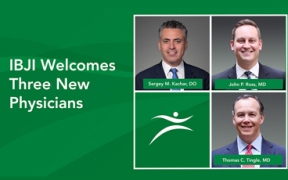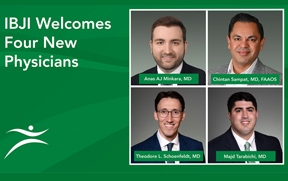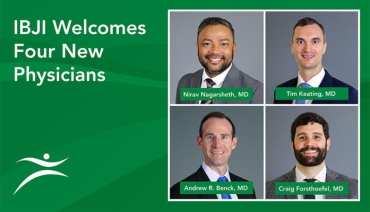No one should have to live with chronic back pain causing nerve symptoms in the legs, especially when so many safe and effective back surgery options are available to provide relief.
This blog article will describe the different types of surgical treatments, when they’re most commonly used, and how effective they are at relieving back pain.
When Is Back Surgery Typically Needed?
Back pain can arise from nerve root compression or pressure on the spinal nerves. This typically causes radiating leg pain related to the nerve root compression. Back pain can also stem from a muscle spasm or mechanical pain.
Episodes of lower back pain can affect anyone at any point in their life, and these episodes can cause extreme pain. Despite the disruption to our daily lives that acute back pain can cause, it usually improves with time and conservative non-surgical care, especially if it results from a muscle spasm from a pulled muscle or charley horse.
Mechanical acute pain, which worsens with activity, differs from muscle spasms. It may be a problem of bone and disc instability or nerve pinching from anatomical conditions, causing nerve-related leg pain which can be improved with surgery. Unfortunately, there are situations in which patients with lower back pain do not have great surgical options.
Before consulting an orthopedic spine surgeon, patients with lower back pain should consult their primary care physician for prescribed medicines, physical therapy, and chiropractic care to help alleviate back pain. A spine surgeon should be consulted if there is weakness associated with these symptoms.
For back surgery to be recommended, a patient's symptoms must fit with an identifiable cause in clinical history and examination, and in radiographic pictures such as MRI, CT scan, or a myelogram. When all conservative treatments fail over time, surgical options for back pain may be indicated as a treatment to improve quality of life.
Surgical Procedures for Back Pain
Different back surgery options are better suited for different situations depending on the condition and treatments already administered. Here are some of the most common surgical treatment options for back pain.
Laminectomy/Laminotomy
A laminectomy/laminotomy is a surgical procedure to remove parts of the vertebral bone (known as the lamina), bone spurs, or ligaments in the back to relieve pressure on the spinal nerves.
This back surgery is minimally invasive, requiring only small incisions to push aside the back muscles instead of cutting into them. Portions of the vertebra adjacent to the lamina are left undamaged to maintain spinal stability.
If an extensive laminectomy is necessary, it may cause the spine to become somewhat unstable and require a spinal fusion to be performed.
Foraminotomy
The surgeon performs a foraminotomy to cut away bone at the sides of the vertebrae to make space for the nerve roots exiting the spine. The distended space can relieve pressure on the nerves, helping to alleviate pain.
A foraminotomy can also reduce spine stability, and a spinal fusion back surgery may be performed simultaneously to correct the problem with the spine.
Discectomy
The spinal disc that acts as a cushion to separate the vertebrae may be inflamed from a bulging or slipped disc, causing it to press on a spinal nerve and cause back pain and radiating leg pain.
In a discectomy procedure, the surgeon removes all or part of the herniated lumbar disc material pressing on the nerve root or the spinal cord. A discectomy can be performed through a large incision, or in most cases, a smaller incision can be made to perform a microdiscectomy.
Microdiscectomy uses a special microscope to get a larger view of the disc and nerves and therefore requires only a smaller cut, which lessens tissue damage. It is a minimally invasive outpatient procedure. The severe leg pain from nerve root irritation is typically improved immediately.
Spinal Fusion
Spinal fusion surgery is one of the most common surgical options for nerve-related leg pain coming from the back. These conditions may also present with considerable back pain. Spinal fusion is used in situations in which a spine specialist can’t treat mechanical back pain associated with leg pain with aggressive conservative treatment, exercise, and strengthening physiotherapy for the spinal muscles and ligaments.
In spinal fusion surgery, the surgeon joins spinal bones, known as vertebrae, together. Fusion eliminates movement between the spine's bones at a painful vertebral motion segment. The main goal of this procedure is to reduce the pain from the affected joint.
Lumbar spinal fusion surgery involves adding a bone graft to a section of the spine to allow a biological response in the body, causing the bone graft to grow between the vertebral sections to create a bone fusion. This fixed bone made through the fusion procedure replaces the mobile joint to prevent any painful joint movement and limit the spinal nerves' stretching.
Spinal fusion can be performed from many different approaches, and typically cages or screws are used to support the fusion further. Spinal fusion surgery may not just be limited to one motion segment but may span across several motion segments.
Fusion surgery is typically done in as minimally invasive fashion as possible. The goal of minimally invasive intervention is to reduce collateral damage to surrounding tissues and structures while successfully treating the problematic condition.
Disc Replacement
In certain conditions, patients may be a candidate for a disc replacement procedure. The indication for disc replacement is limited in comparison to fusion surgery, so not all patients are candidates for disc replacement surgery.
In artificial disc replacement back surgery, the surgeon removes a damaged spinal disc to insert an artificial disc between the vertebrae, maintaining the motion of the spine.
This procedure is seen as an alternative to spinal fusion because the recovery time for a disc replacement may be shorter than a spine fusion procedure. There may be a small risk associated with artificial disc replacement surgery of the foreign artificial disc failing or dislodging.
Schedule an Appointment
Back surgery is a big decision, but it can provide significant relief and a better quality of life. The back and spine surgeons at IBJI are among the best in the Chicagoland area.
If you're experiencing any of the above symptoms, contact us immediately or find a location near you and Schedule online.
*This content is for information only and is not intended to replace the diagnosis, treatment, or medical advice from your treating healthcare professionals. The content does not provide medical advice, does not constitute the practice of medicine or other healthcare professional services, and does not create a doctor-patient relationship. You should not rely on this information as a substitute, nor does it replace professional medical advice, diagnosis, or treatment. If you have concerns or questions, seek the advice of your healthcare professionals. If you think you may have a medical emergency, call your doctor or 911 immediately. Do not rely on electronic communications or communicate through this website for immediate, urgent medical needs. This website is not designed to facilitate medical emergencies. The use of the information is at the reader’s own risk. The links are provided for information and convenience only. We cannot accept responsibility for the sites linked or the information found here. A link does not imply an endorsement of a site.





